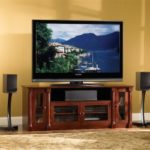The choice of bracket for the TV
Before choosing a TV mount, the user of the TV equipment for whom it is purchased must understand the design features and characteristics of this holding device.
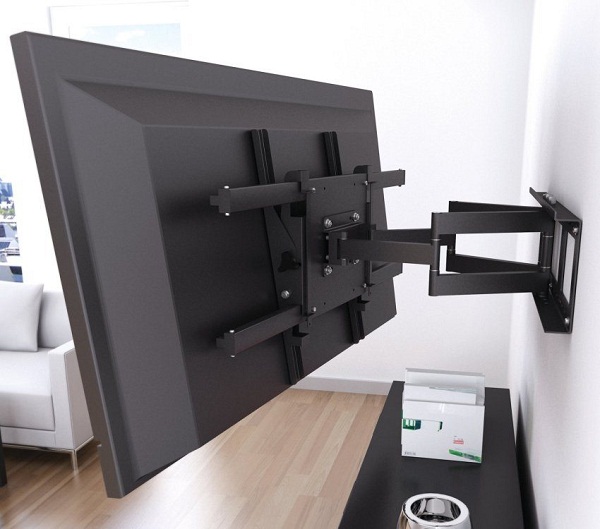
Content
Why is it needed
The TV bracket is most often a metal support bracket mounted on a wall or ceiling and forming a ledge on which the TV is mounted. First of all, it is a convenient design that helps fix the TV. This is an excellent solution for small rooms, such as kitchens, in which it is inconvenient to install TV cabinets, since there is only enough space for more functional furniture. Of course there is and other kitchen TV options, but hang the technique on the wall - the most optimal. By the way TV selection in the kitchen also has its own characteristics.
Installing television equipment in this way can be an excellent design solution. LCD screen with a large diagonal on the wall becomes a bright interior detail.
Having picked up a functional bracket for your TV, the user will be able to adjust the angle of inclination, rotate the screen to the sides, install optimum height for your tv. In addition, the TV mounted on the wall is safer. But it is worth considering TV load. Not every base can withstand the weight of such equipment, so it’s very important to know how to hang the TV on the wall. If the fasteners easily enter the wall (plaster or homemade partition), it is better to refrain from installing the TV on such a basis. In this case it is worth considering bearing walls or ceiling.
Today, the stores have a wide selection of similar restraints for televisions. Installing them does not require special skills, but the choice may be difficult. Therefore, it is necessary in advance to deal with the criteria for how to choose the right bracket for your TV.
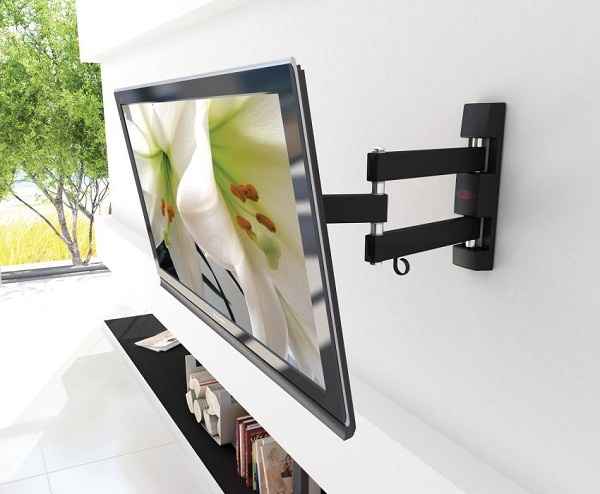
What to look for when choosing a TV retainer
It is a mistake to assume that the brackets of different manufacturers are absolutely the same. They have their own characteristics and are aimed at solving a certain number of tasks. As a rule, brackets perform various technical functions. The main characteristics when choosing are the following.
- Orientation to the characteristic type of technical device. Despite the fact that many types of brackets have a universal mechanism, thanks to which a TV is installed on it, there are also specific models for non-standard equipment. In the second case, such a purchase is most often forced, when other options simply do not exist.
- Mounting type and availability of additional technical devices. As consumers today are increasingly thinking of acquiring and connecting the speaker system to the TV, it is advisable to arrange both devices side by side. For these options, manufacturers have developed brackets with additional shelves to accommodate related equipment.
- Possible maximum weight. Before you buy a particular model of the bracket, you need to familiarize yourself with the possible maximum load that it can withstand. Information on the weight of the TV and the maximum load of the restraint system can be found in the device data sheets.
- Ergonomic parameters and device design. In addition to the main technical characteristics, the bracket can play a role in the design of the room itself. Due to the different colors, shape and variety of materials, such a technical device can emphasize the chosen interior style. Some models are equipped with decorative panels, behind which you can hide the wires.
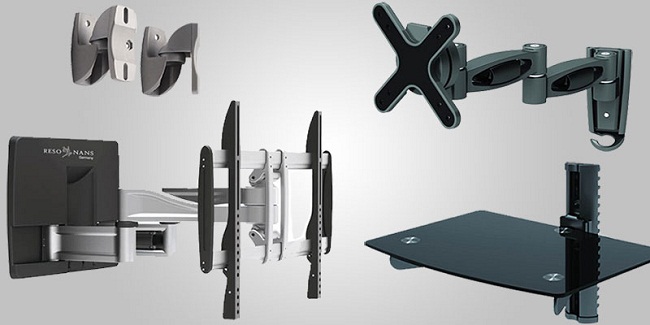
What is the VESA standard?
The most popular manufacturers who are engaged in the production of suspended structures and fixtures, in most cases, use the standard list of parameters FDMI. It is included in the set sizes for other technical devices. The combined family of such indicators, which is the single international standard, is called VESA.
The standard defines the size between fasteners. Holes under them can be located at the corners of a rectangle, triangle or square.This feature is definitely worth considering when buying a restraint. Standards for the restraint and the rear panel of the TV (to which it is attached) must match. You can get accurate information at equipment specifications.
The first universal bracket that was added to the VESA list is a holding device with parameters 100x100. This form of bracket has four square-shaped bolts, where each side is equal to 100mm. To date, there are several accepted international standards that are used to mount the TV. If you need a model that provides maximum distance between bolts - this is VESA 800x400.
There are universal models that can be suitable for several technical devices at once.
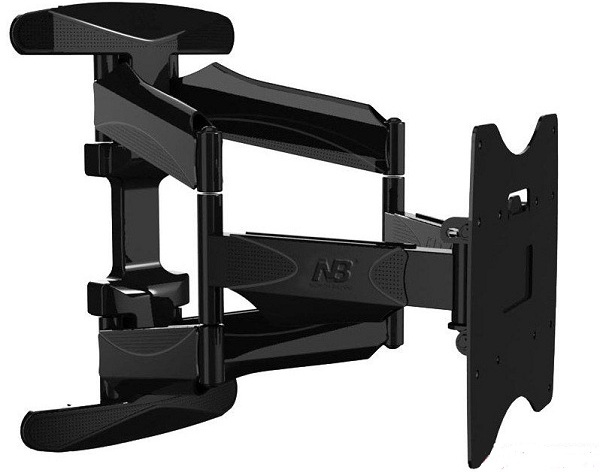
VESA bracket
TV bracket classification
Depending on the future location of the television equipment, there are the following types of restraint.
- Fixed type of wall bracket. Convenient model for small areas. Due to the fact that the model fits tightly to the wall, you can save free space.As a disadvantage, it can be noted that the model implies a clear fixation. Therefore, installing the TV on such a holding device, in the future it will be impossible to change the viewing angle.
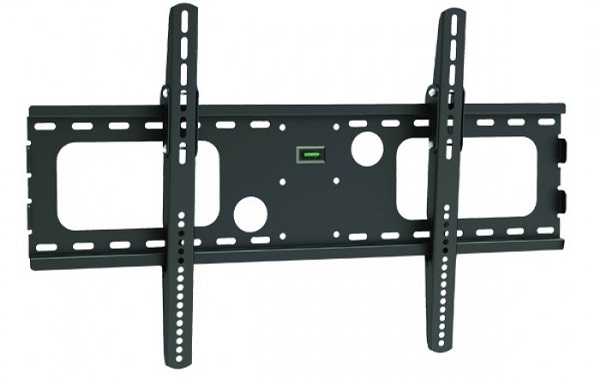
- Inclined type of wall bracket. It is also worth choosing for small rooms, as well as the previous version. The main difference is that the oblique type allows you to change the angle of vertical tilt to 20 degrees. To use the construction as much as possible, and at the same time maintain comfortable conditions during use, it is recommended to install the model closer to the ceiling.
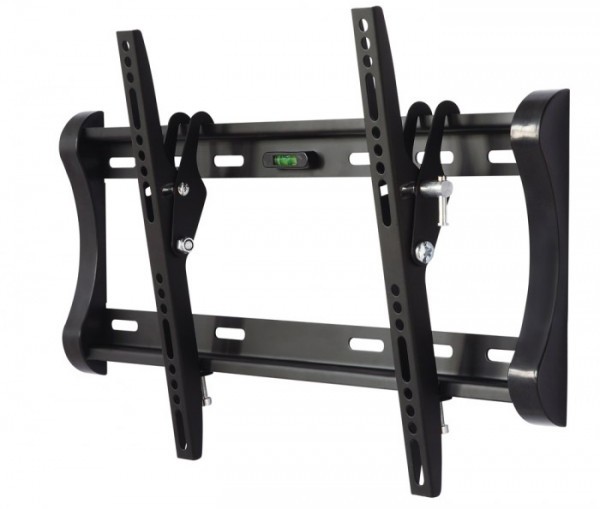
- Tilt and swivel model. This is an option that combines the functions of all the above types of bracket. It can change the position of both vertical and horizontal inclination in the plane. But this model takes up more space, so using it in small rooms is not always convenient. In addition, this model implies more weight than standard brackets, respectively, you need to pick up other parts for mounting.
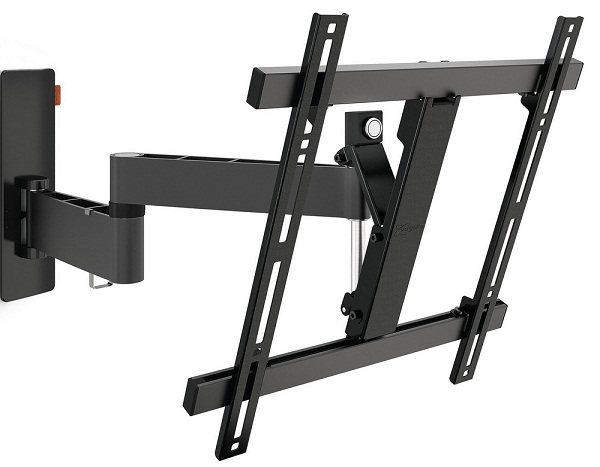
- Ceiling option. Comfortable model that can position the TV in three planes. The only limit is the height of the ceiling.
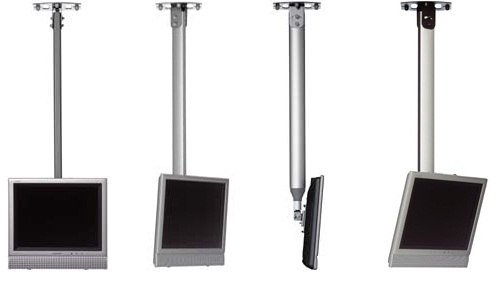
When choosing a bracket, it is important to relate many parameters, in particular, such as optimal viewing distanceSince after final fixation of the restraint and TV on it, it will be much more difficult to remove the equipment from the wall. In addition, it is recommended to consider in advance the availability of additional technical devices that will be located along with television equipment.

/rating_off.png)






